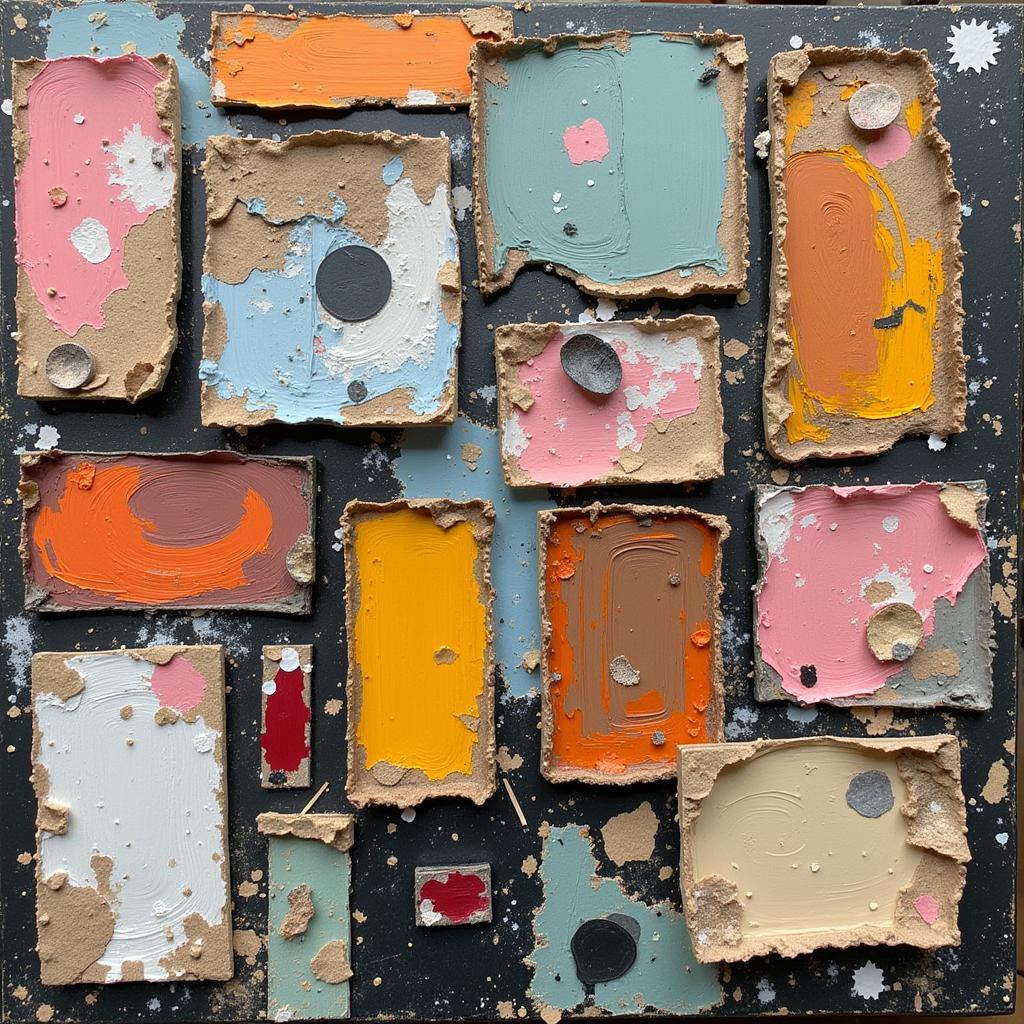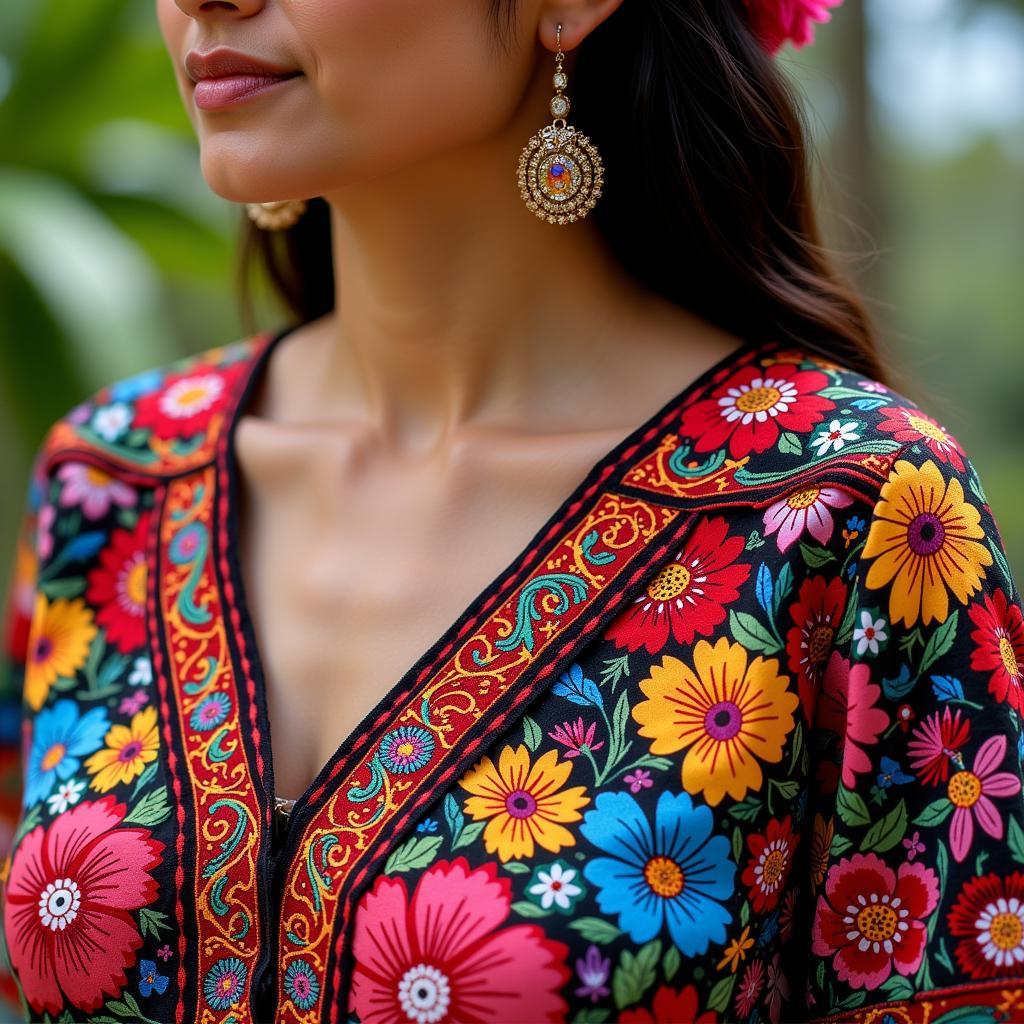Exploring the Exquisite Art of Antique Chinese Silk Embroidery
Antique Chinese silk embroidery is a testament to the rich cultural heritage and exquisite craftsmanship of ancient China. For centuries, skilled artisans have meticulously stitched intricate designs onto luxurious silk, creating breathtaking works of art that have captivated collectors and art enthusiasts alike. This article delves into the fascinating world of antique Chinese silk embroidery, exploring its history, techniques, and enduring allure.
A Legacy Woven in Silk: The History of Chinese Embroidery
The origins of embroidery in China can be traced back thousands of years, with archaeological evidence suggesting its existence during the Shang dynasty (c. 1600-1046 BCE). Over the centuries, embroidery evolved from a simple craft to a highly refined art form, reaching its zenith during the Ming (1368-1644) and Qing (1644-1912) dynasties.
During these periods, imperial workshops produced elaborate silk embroideries for the court, adorning everything from robes and hangings to cushions and accessories. These exquisite pieces often featured intricate patterns, vibrant colors, and symbolic motifs that reflected the beliefs and aesthetics of Chinese culture.
The Art of the Stitch: Techniques and Materials
Antique Chinese silk embroidery is renowned for its meticulous craftsmanship and the use of high-quality materials. Silk, prized for its lustrous sheen and smooth texture, was the primary fabric used for embroidery. The silk threads, often dyed with natural pigments, were meticulously stitched onto the fabric using a variety of techniques, including:
- Suzhou embroidery (苏绣): Known for its delicate needlework, fine silk threads, and lifelike depictions of nature.
- Xiang embroidery (湘绣): Characterized by its vibrant colors, bold designs, and use of black satin as a background.
- Yue embroidery (粤绣): Distinguished by its intricate patterns, use of gold and silver threads, and incorporation of Western influences.
These techniques, passed down through generations of master embroiderers, resulted in stunning works of art that showcased the incredible skill and artistry of Chinese artisans.
Symbolism and Meaning in Antique Chinese Silk Embroidery
Beyond their aesthetic appeal, antique Chinese silk embroideries often carried symbolic meanings. Motifs such as dragons, phoenixes, flowers, and auspicious symbols were carefully chosen for their cultural significance and were believed to bring good fortune, longevity, and prosperity. For instance, the dragon, a symbol of imperial power and good luck, frequently adorned the robes of emperors and high-ranking officials.
Collecting and Appreciating Antique Chinese Silk Embroidery
Today, antique Chinese silk embroidery continues to fascinate collectors and art enthusiasts worldwide. Museums and private collections showcase these exquisite pieces, preserving them for future generations to admire.
When collecting antique Chinese silk embroidery, it’s essential to consider factors such as age, condition, technique, and provenance. Reputable dealers and auction houses can provide guidance and authentication services.
Conclusion
Antique Chinese silk embroidery is a testament to the rich cultural heritage and artistic brilliance of ancient China. These exquisite works of art, with their intricate designs, vibrant colors, and symbolic motifs, continue to captivate and inspire us today. Whether you’re a seasoned collector or simply appreciate the beauty of traditional crafts, exploring the world of antique Chinese silk embroidery is a journey of discovery and wonder.
FAQs about Antique Chinese Silk Embroidery
1. How can I tell if a piece of Chinese silk embroidery is antique?
Determining the age of antique Chinese silk embroidery requires expertise. Look for signs of aging, such as fading, wear, and repairs. Consulting with a reputable appraiser or specialist is recommended for authentication.
2. What are some common motifs found in antique Chinese silk embroidery?
Dragons, phoenixes, flowers (especially peonies and lotuses), auspicious symbols (such as bats and peaches), and scenes from Chinese mythology and literature are common motifs.
3. How should I care for antique Chinese silk embroidery?
Store antique Chinese silk embroidery in a cool, dry place away from direct sunlight. Avoid handling the embroidery excessively to prevent damage. Professional cleaning and conservation are recommended.
4. Where can I buy or see antique Chinese silk embroidery?
Reputable antique dealers, auction houses, museums, and online platforms specializing in Asian art offer opportunities to purchase or view antique Chinese silk embroidery.
5. What is the significance of color in antique Chinese silk embroidery?
Colors held symbolic meanings in Chinese culture. For example, red symbolized good fortune and prosperity, while yellow was associated with royalty.
For any inquiries or assistance, please contact us at Phone Number: +84 24 6257 3573, Email: [email protected] or visit us at Savico Megamall, 7-9 Nguyen Van Linh Street, Gia Thuy Ward, Long Bien District, Hanoi 10000, Vietnam. Our dedicated customer support team is available 24/7 to assist you.




